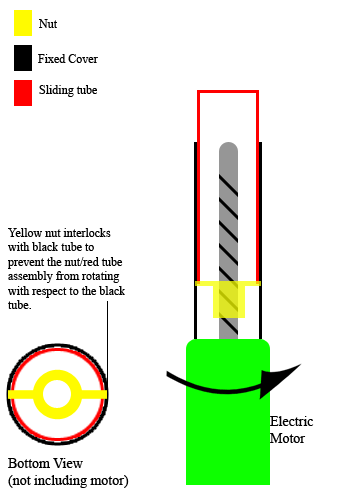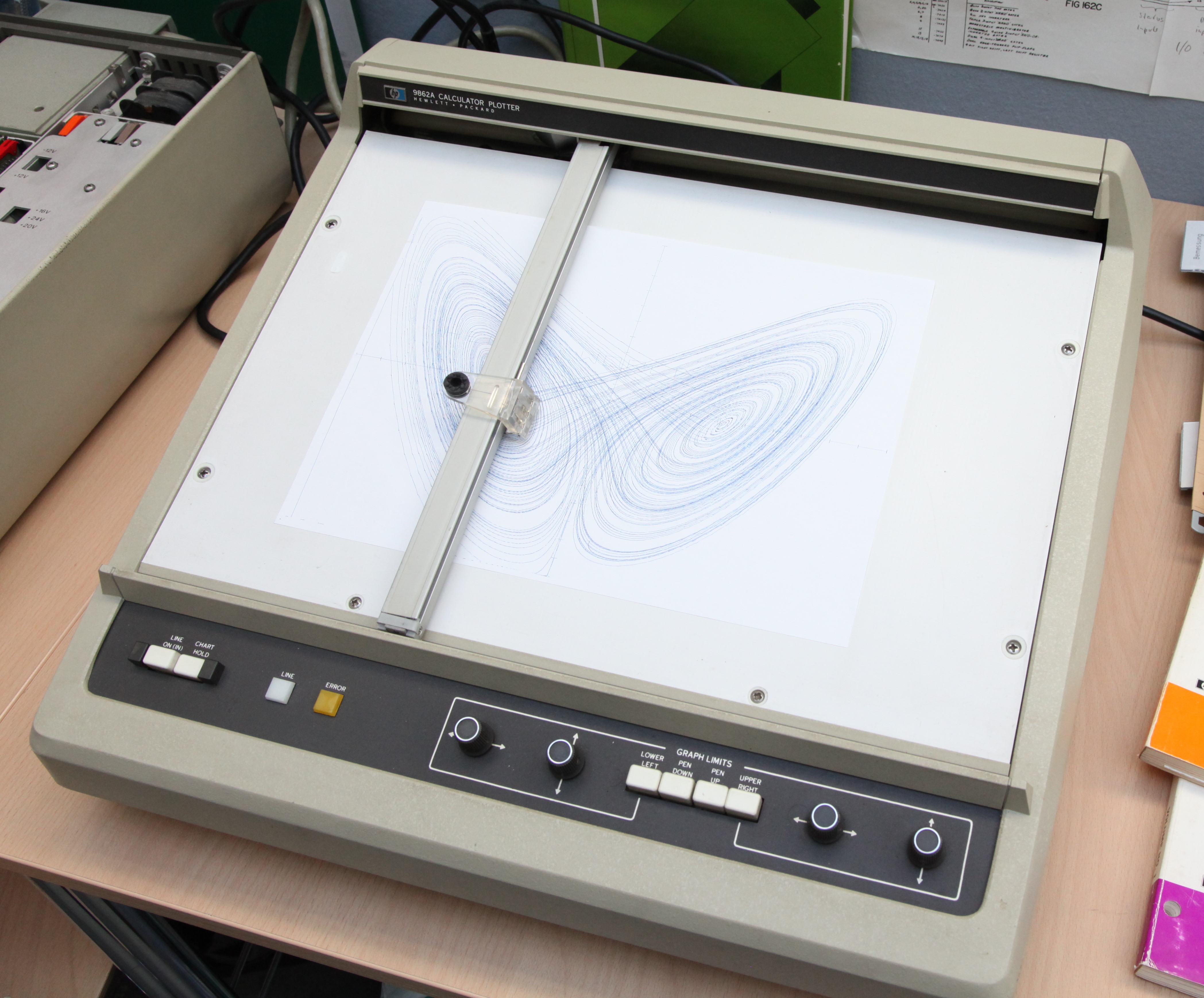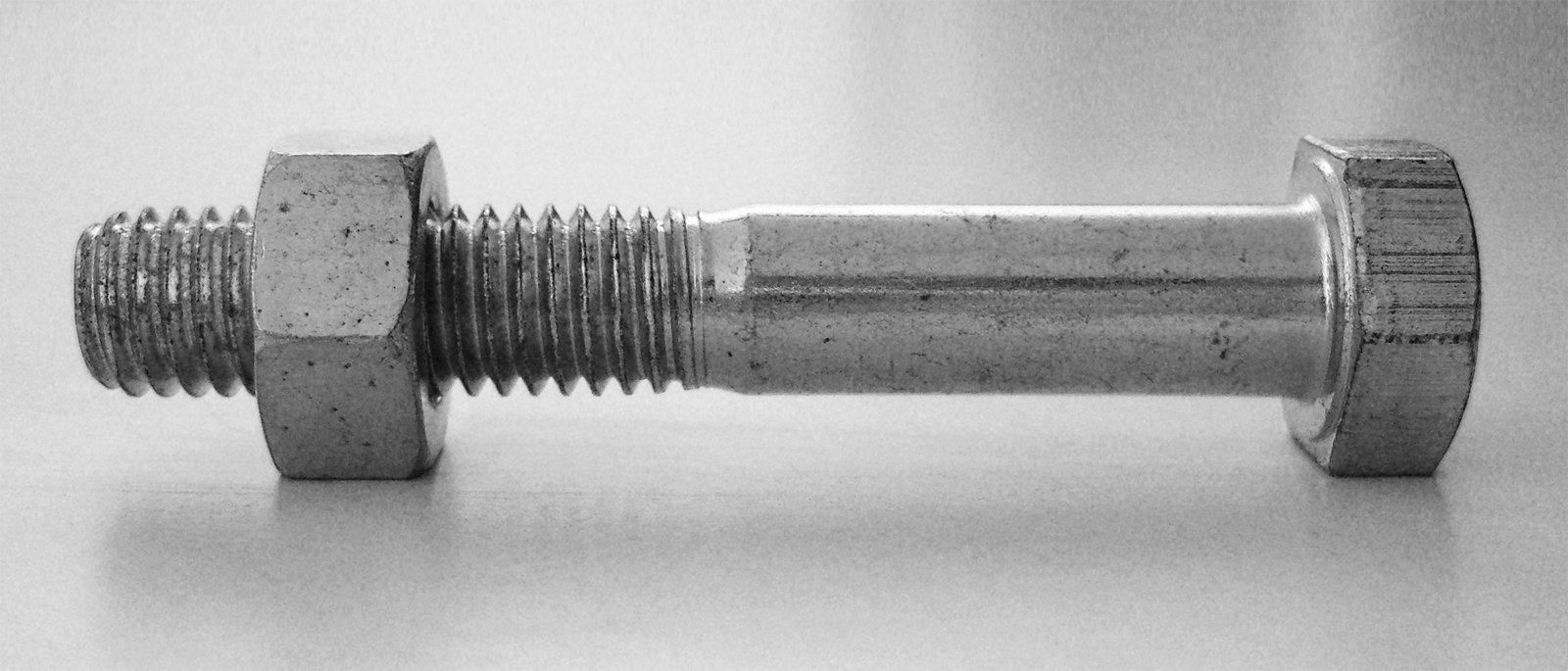|
Screw Joint
A screw joint is a one-Degree of freedom (mechanics), degree-of-freedom kinematic pair used in mechanisms. Screw joints provide single-axis translation by utilizing the threads of a lead screw to provide such translation. This type of joint is used primarily on most types of linear actuators and certain types of cartesian robots. A screw joint is sometimes considered as a separate type but it is actually a variation of bolted joint. The difference is that a screw is used rather than a Bolt (fastener), bolt, thus requiring an internal thread in one of the jointed parts. This can save space, however, continuous reuse of the thread would probably damage the coils, making the whole part unsuitable. See also * Biological screw joint * Cylindrical joint * Degrees of freedom (mechanics) * Kinematic pair * Kinematics * Mechanical joint References Kinematics Rigid bodies {{classicalmechanics-stub ... [...More Info...] [...Related Items...] OR: [Wikipedia] [Google] [Baidu] |
Prismatic Joint
A prismatic joint is a one- degree-of-freedom kinematic pair which constrains the motion of two bodies to sliding along a common axis, without rotation; for this reason it is often called a slider (as in the slider-crank linkage) or a sliding pair. They are often utilized in hydraulic and pneumatic cylinders. A prismatic joint can be formed with a polygonal cross-section to resist rotation. See for example the dovetail joint and linear bearings. See also * Cylindrical joint * Degrees of freedom (mechanics) * Kinematic pair * Kinematics * Mechanical joint * Revolute joint A revolute joint (also called pin joint or hinge joint) is a one- degree-of-freedom kinematic pair used frequently in mechanisms and machines. The joint constrains the motion of two bodies to pure rotation along a common axis. The joint does ... References Kinematics Rigid bodies {{classicalmechanics-stub ... [...More Info...] [...Related Items...] OR: [Wikipedia] [Google] [Baidu] |
Degree Of Freedom (mechanics)
In physics, the degrees of freedom (DOF) of a mechanical system is the number of independent parameters that define its configuration or state. It is important in the analysis of systems of bodies in mechanical engineering, structural engineering, aerospace engineering, robotics, and other fields. The position of a single railcar (engine) moving along a track has one degree of freedom because the position of the car is defined by the distance along the track. A train of rigid cars connected by hinges to an engine still has only one degree of freedom because the positions of the cars behind the engine are constrained by the shape of the track. An automobile with highly stiff suspension can be considered to be a rigid body traveling on a plane (a flat, two-dimensional space). This body has three independent degrees of freedom consisting of two components of translation and one angle of rotation. Skidding or drifting is a good example of an automobile's three independent degrees ... [...More Info...] [...Related Items...] OR: [Wikipedia] [Google] [Baidu] |
Kinematic Pair
In classical mechanics, a kinematic pair is a connection between two physical objects that imposes constraints on their relative movement (kinematics). German engineer Franz Reuleaux introduced the kinematic pair as a new approach to the study of machines that provided an advance over the motion of elements consisting of simple machines. Description Kinematics is the branch of classical mechanics which describes the motion of points, bodies (objects) and systems of bodies (groups of objects) without consideration of the causes of motion. Kinematics as a field of study is often referred to as the "geometry of motion". For further detail, see Kinematics. Hartenberg & Denavit presents the definition of a kinematic pair: In the matter of connections between rigid bodies, Reuleaux recognized two kinds; he called them higher and lower pairs (of elements). With higher pairs, the two elements are in contact at a point or along a line, as in a ball bearing or disk cam and follower; t ... [...More Info...] [...Related Items...] OR: [Wikipedia] [Google] [Baidu] |
Lead Screw
A leadscrew (or lead screw), also known as a power screw or translation screw,Bhandari, p. 202. is a screw used as a linkage in a machine, to translate turning motion into linear motion. Because of the large area of sliding contact between their male and female members, screw threads have larger frictional energy losses compared to other linkages. They are not typically used to carry high power, but more for intermittent use in low power actuator and positioner mechanisms. Leadscrews are commonly used in linear actuators, machine slides (such as in machine tools), vises, presses, and jacks.Shigley, p. 400. Leadscrews are a common component in electric linear actuators. Leadscrews are manufactured in the same way as other thread forms (they may be rolled, cut, or ground). A lead screw is sometimes used with a split nut (also called half nut) which allows the nut to be disengaged from the threads and moved axially, independently of the screw's rotation, when needed ( ... [...More Info...] [...Related Items...] OR: [Wikipedia] [Google] [Baidu] |
Linear Actuator
A linear actuator is an actuator that creates motion in a straight line, in contrast to the circular motion of a conventional electric motor. Linear actuators are used in machine tools and industrial machinery, in computer Peripheral, peripherals such as disk drives and printers, in Valve, valves and Damper (flow), dampers, and in many other places where linear motion is required. Hydraulics, Hydraulic or Pneumatics, pneumatic cylinders inherently produce linear motion. Many other mechanisms are used to generate linear motion from a rotating motor. Types Mechanical actuators Machine, Mechanical linear actuators typically operate by conversion of rotary motion into linear motion. Conversion is commonly made via a few simple types of mechanism: * Screw (simple machine), Screw: leadscrew, screw jack, ball screw and roller screw actuators all operate on the principle of the simple machine known as the screw. By rotating the actuator's nut, the screw shaft moves in a line. * ... [...More Info...] [...Related Items...] OR: [Wikipedia] [Google] [Baidu] |
Cartesian Robot
A Cartesian coordinate robot (also called linear robot) is an industrial robot whose three principal axes of control are linear (i.e. they move in a straight line rather than rotate) and are at right angles to each other. The three sliding joints correspond to moving the wrist up-down, in-out, back-forth. Among other advantages, this mechanical arrangement simplifies the robot control arm solution. It has high reliability and precision when operating in three-dimensional space. As a robot coordinate system, it is also effective for horizontal travel and for stacking bins. Configurations Robots have mechanisms consisting of rigid links connected together by joints with either linear (prismatic ''P'') or rotary (revolute ''R'') motion, or combinations of the two. Active prismatic ''P'' and active revolute ''R'' joints are driven by motors under programmable control to manipulate objects to perform complex automated tasks. The linear motion of active prismatic ''P'' joints ... [...More Info...] [...Related Items...] OR: [Wikipedia] [Google] [Baidu] |
Bolted Joint
A bolted joint is one of the most common elements in construction and machine design. It consists of a male threaded fastener (e. g., a bolt) that captures and joins other parts, secured with a matching female screw thread. There are two main types of bolted joint designs: tension joints and shear joints. Joint types In a tension joint, the bolt and clamped components of the joint are designed to transfer an applied tension load through the joint by way of the clamped components by the design of a proper balance of joint and bolt stiffness. The joint should be designed such that the clamp load is never overcome by the external tension forces acting to separate the joint. If the external tension forces overcome the clamp load (bolt preload) the clamped joint components will separate, allowing relative motion of the components. The second type of bolted joint transfers the applied load in shear of the bolt shank and relies on the shear strength of the bolt. Tension loads on such ... [...More Info...] [...Related Items...] OR: [Wikipedia] [Google] [Baidu] |
Bolt (fastener)
A bolt is a form of threaded fastener with an external male thread requiring a matching pre-formed female thread such as a nut. Bolts are very closely related to screws. Bolts vs. screws The distinction between a bolt and a screw is poorly-defined. The academic distinction, per ''Machinery's Handbook'', is in their intended design: bolts are designed to pass through an unthreaded hole in a component and be fastened with the aid of a nut, although such a fastener can be used without a nut to tighten into a threaded component such as a nut-plate or tapped housing. Screws in contrast are used in components which contain their own thread, or to cut its own internal thread into them. This definition allows ambiguity in the description of a fastener depending on the application it is actually used for, and the terms screw and bolt are widely used by different people or in different countries to apply to the same or varying fastener. Bolts are often used to make a bolted joint. T ... [...More Info...] [...Related Items...] OR: [Wikipedia] [Google] [Baidu] |
Biological Screw Joint
The biological screw joint is a naturally occurring form of the screw joint, a mechanical device that combines rotational movement with single-axis translation. Alexander Riedel of the State Museum of Natural History Karlsruhe and Thomas van de Kamp of the Karlsruhe Institute of Technology discovered it in specimens of '' Trigonopterus oblongus'', a weevil found in Papua. Discovery Anatomical examination was made for specimens of the weevil species '' Trigonopterus oblongus'', provided by the Karlsruhe State Museum of Natural History, using a microtomograph at the Institute of Synchrotron Radiation (ANKA) of Karlsruhe Institute of Technology. The analysis revealed that the weevils had a nut-and- screw system for the hip- leg joint. Mechanism The mechanism has been described as "rotational movement combined with a single-axis translation". The arthropod hip–leg joint consists of two parts – the coxa (or the hip) and the trochanter (or the head of the arthropod leg fem ... [...More Info...] [...Related Items...] OR: [Wikipedia] [Google] [Baidu] |
Cylindrical Joint
A cylindrical joint is a two- degrees-of-freedom kinematic pair used in mechanisms. Cylindrical joints constrain two bodies to a single axis while allowing them to rotate about and slide along that axis. This can be pictured by an unsecured axle mounted on a chassis, as it may freely rotate and translate. An example of this would be the rotating rods of a table football. See also * Degrees of freedom (mechanics) * Kinematic pair * Kinematics * Prismatic joint * Revolute joint A revolute joint (also called pin joint or hinge joint) is a one- degree-of-freedom kinematic pair used frequently in mechanisms and machines. The joint constrains the motion of two bodies to pure rotation along a common axis. The joint does no ... References Kinematics Rigid bodies {{classicalmechanics-stub ... [...More Info...] [...Related Items...] OR: [Wikipedia] [Google] [Baidu] |




